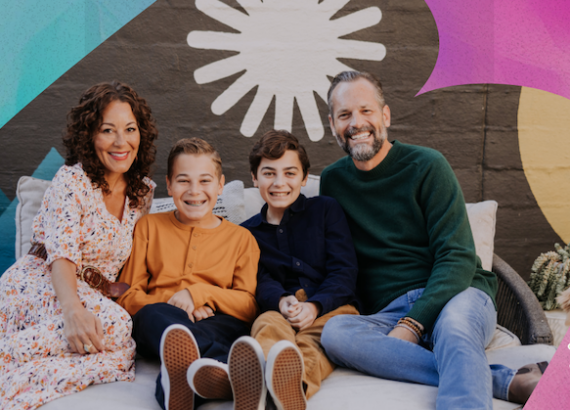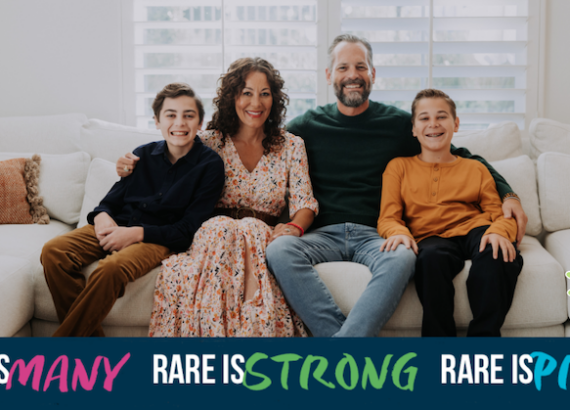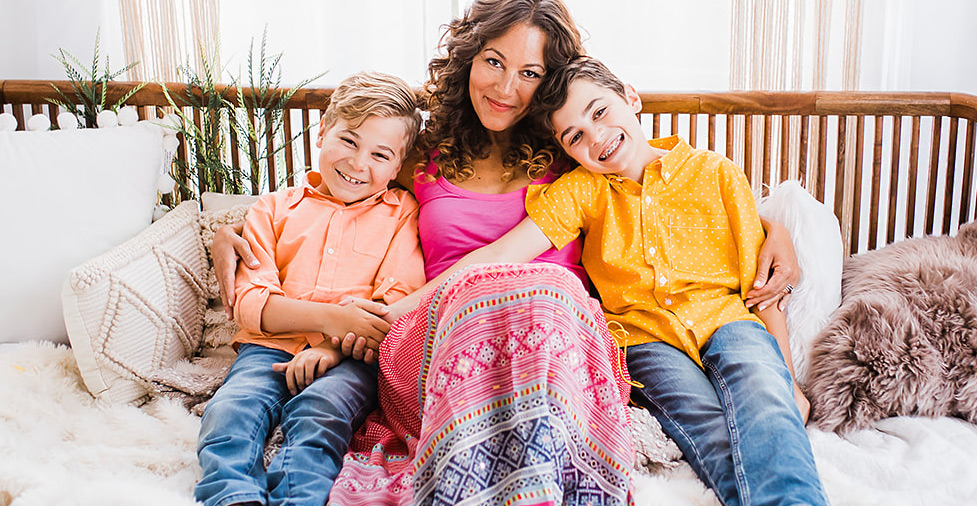The Avery Project By Caitlin Eppes

Our daughter Avery was born in 2017. Being our second child, we felt calmer, more experienced, and prided ourselves on the ease at which parenting a newborn came. But like too many of you reading this know, there was that nagging feeling I had deep down that something was “just off.”
The first specialist was a Dermatologist after Avery’s pediatrician realized at her 2-week well visit that the birthmark was not a stork-bite but more likely a Port Wine Stain. The Dermatologist led us to a Neurologist, and an Orthopedist, and more. Avery’s developmental delays were often easily rationalized, but when she finally sat at 12 months and then lost that ability at 15 months, it became abundantly clear to us and Avery’s doctors; something was wrong.
MRI’s, x-rays, metabolomics assays, and EEGs all taught us a bit more about Avery, but none provided the answers or specificity to lead us to a diagnosis. We do know she has axial hypotonia, appendicular hypertonia, developmental delay, upper and lower GI issues, food allergies, a tethered spinal cord, sacral dimples, delayed speech, and spasticity.
Then, in March of 2019, following Whole Exome Sequencing, we were informed she had a Variant of Uncertain Significance impacting the SPTSSA gene, a key part of sphingolipid metabolism. This was our diagnosis, a change in a gene that people knew little about. We were advised that our daughter was the only person known to have this variant. We were told to check back in 5 years to see if there was any new research. We were entered into Gene Matcher, a global database for physicians to identify other patients worldwide with the same genetic variants. And then we waited and even forgot that we were part of that database.
We met with specialists to learn more about their work and whether it may be applicable to Avery’s variant. We learned what’s required to research a gene that only impacts one person. We knew from far too many stories of amazing children gone way too soon that time is not a luxury when diagnosed with a rare disease. So, we decided to fund a private research team, known as The Avery Project, to learn as much as we could as fast as possible.
A year and a half after Avery’s WES results, we received a call from her neurologist and geneticist. Gene Matcher had identified someone else with the same variant! Diagnosed through the Undiagnosed Disease Network, we have a community now, even if it’s only two.
The only other person in the world with the same variant as our daughter is a loving nine-year-old girl, also named Avery! The Avery Project suddenly took on a whole new meaning.
We have a long road ahead, but communities like Rare Mamas make it all feel a bit lighter. Thank you!
Guest Post by Caitlin Eppes, SPTSSA Research Supporter and Advocate, Rare Mama to Avery
theaveryproject.com







